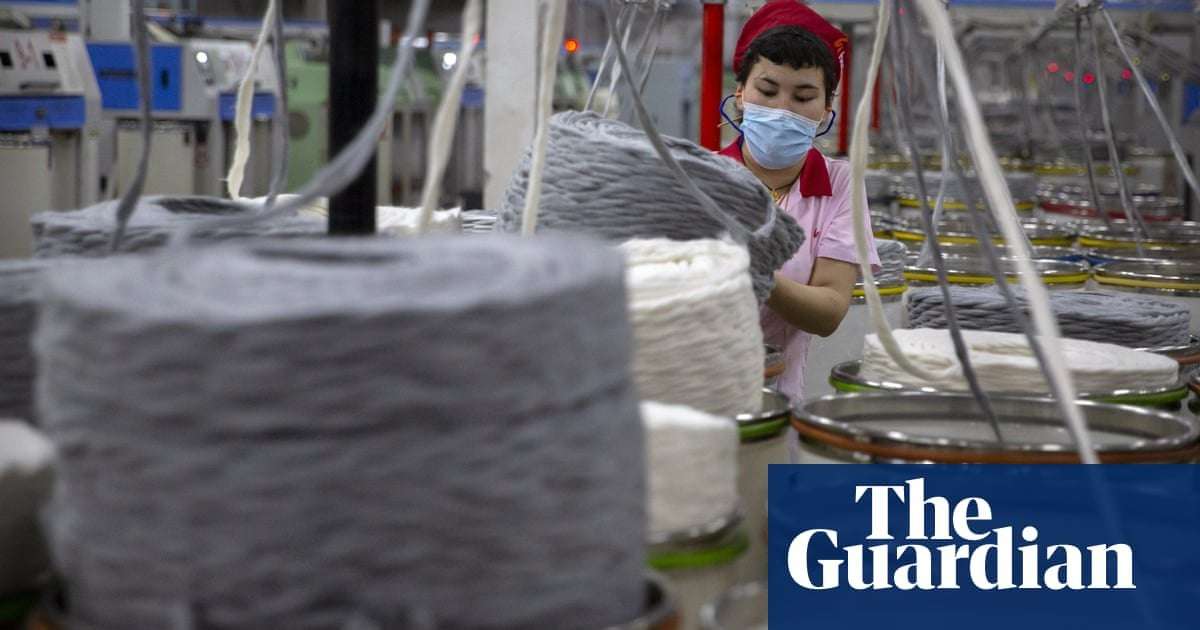The fashion industry has been told it must wean itself off cotton from China’s Xinjiang region, as a new law comes into force giving US border authorities greater powers to block or seize goods linked to forced labour in China.
The Uyghur Forced Labor Prevention Act (UFLPA), which comes into force today, assumes that any product partly or wholly made in Xinjiang, north-west China, is linked to the region’s labour camps. Since 2017, the Chinese authorities have detained as many as one million Uyghurs and subjected them to forced labour.
The fashion industry will be particularly affected by the new law. About 20% of the world’s cotton comes from China, and 84% of that comes from Xinjiang.
The UFLPA has designated cotton a “high priority for enforcement”, along with tomatoes and polysilicon. Any British or EU fashion brand exporting to the US will also be subject to it, and failure to provide adequate certification or supply-chain details may result in fines of up to $250,000 (£205,000).
However, the ban poses big problems for the industry. Liv Simpliciano of Fashion Revolution said Xinjiang cotton is ubiquitous in supply chains. “The difficulty is that at the ginning stage [when fibres are separated from their seeds], cotton from disparate locations is mixed together, making it impossible to trace the provenance,” she said.
A number of technology companies, among them TrusTrace, SupplyShift and TextileGenesis, plan to use blockchain and artificial intelligence to trace supply chains for fashion labels. Brands can use the platforms to log all their purchase orders and certifications.
In order to prove conclusively an absence of Xinjiang cotton, brands would need to show a “complete digital chain of custody”, said Shameek Ghosh, chief executive of TrusTrace – “where a brand is fully in control of its supply chain from the farm onwards”.
Sign up to the daily Business Today email or follow Guardian Business on Twitter at @BusinessDesk
While fashion has historically been notoriously cagey about its supply chains, there is now a strong business case for full transparency. A recent report by the financial thinktank Planet Tracker said that implementing traceability “can improve net profit on average by 3%-7% for apparel companies”. And that is before any fashion stock has been impounded by border forces.
Because of General Data Protection Regulation, TrusTrace is not alerted if Xinjiang cotton is found in a brand’s supply chain. “Only the brand is informed,” said Ghosh. “They wouldn’t use a platform like this [if they’d be exposed].”
Blockchain technology is not without its problems, however. “If you’re relying on brand discretion to ratify their sourcing practices, then what’s the efficacy going to be?” asked Philippa Grogan of Eco-Age. “Also, blockchain technology is not regulated, so it creates a risk environment – the lack of regulatory oversight makes it vulnerable to market manipulation.”

arsinoe716 on June 21st, 2022 at 14:05 UTC »
The irony is that John Deere sells a ton of machinery in that region.
autotldr on June 21st, 2022 at 09:00 UTC »
This is the best tl;dr I could make, original reduced by 83%. (I'm a bot)
Extended Summary | FAQ | Feedback | Top keywords: fashion#1 cotton#2 Xinjiang#3 chain#4 brand#5
UncertainAboutIt on June 21st, 2022 at 08:15 UTC »